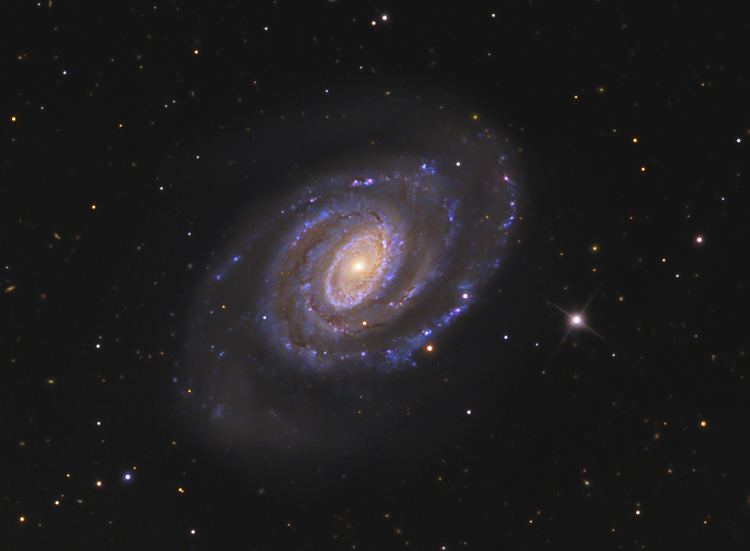Right ascension 13 56 12.004 Redshift 1241 ± 4 km/s Apparent size (V) 6′.1 × 6′.8 | Declination +05° 00′ 52.06″ Type SA(rs)bc pec Magnitude 11.2 Apparent magnitude (V) 11.2 | |
 | ||
Distance 54.5 ± 3.9 Mly (16.7 ± 1.2 Mpc) Similar NGC 5300, NGC 5170, NGC 5247, NGC 5068, NGC 5371 | ||
NGC 5364 is a grand design spiral galaxy located 54.5 million light years away in the constellation Virgo. It is inclined to the line of sight from the Earth at an angle of 47° along a position angle of 25°.
Contents
Structure
The morphological classification of NGC 4698 in the De Vaucouleurs system is SA(rs)bc pec, which indicates it has an incomplete ring structure (rs) in the inner part of the galaxy with moderate to loosely wound arms (bc) and has a peculiar aspect (pec). In particular, the appearance of the spiral arms is amorphous and asymmetrical compared to other galaxies with a similar classification. A companion galaxy, NGC 5363, is located to the north of NGC 5364 and their gravitational interaction may be influencing the peculiar morphology of the latter.
The mid-infrared emission in the nucleus appears weak compared to the spiral arms, suggesting a low rate of star formation in the core region. The inner ring of this galaxy spans a diameter of 22 kly (6.7 kpc) and is located slightly off center with the northern side showing a stronger emission in the hydrogen alpha band compared to the southern half. Multiple H II regions lie along the spiral arms, tracing out their extent. Each of the two main arms wrap all the way around the galaxy, although they display patchiness along much of their length.
NGC Designation
This object was discovered by William Herschel on February 2, 1786 and later listed as NGC 5364. It was subsequently rediscovered by John Herschel on April 7, 1828 and later listed as NGC 5317.
